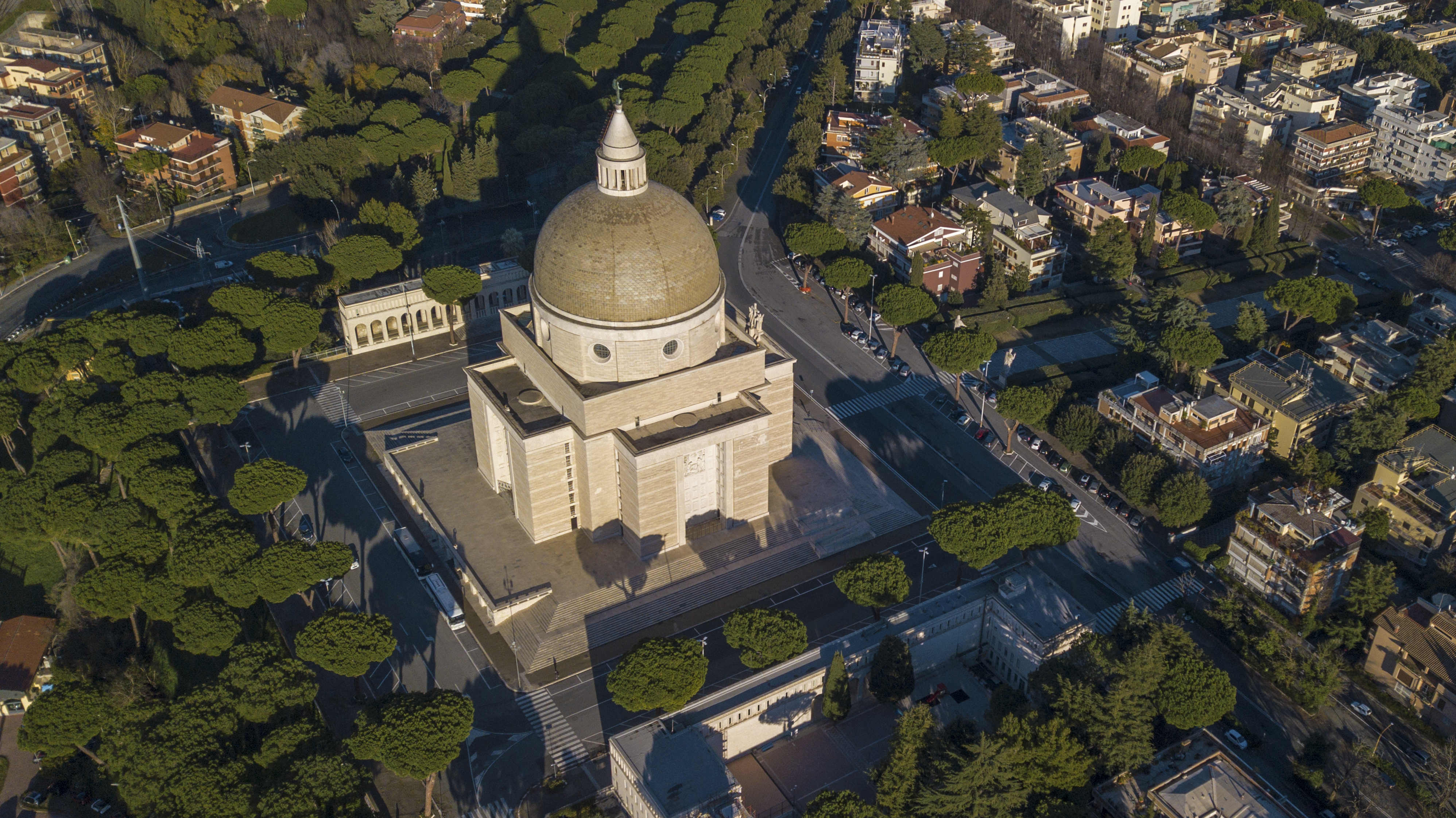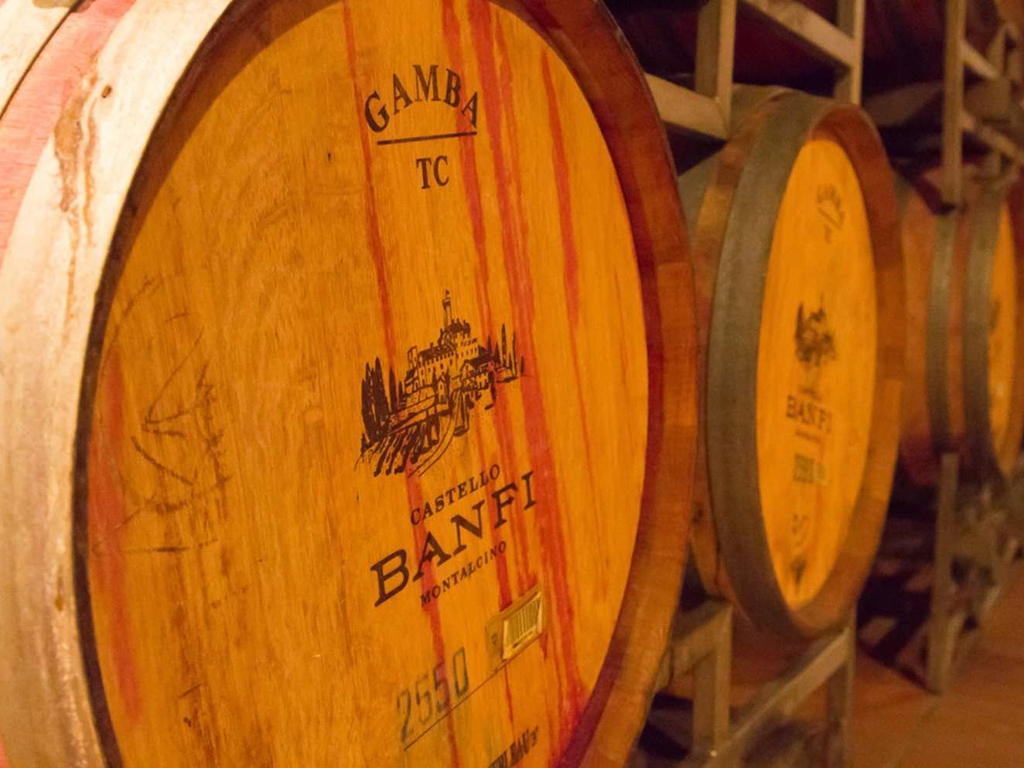“Duomo” is the Italian term for a church built to the specifications of a cathedral (not all duomos are the seat of a bishop, so they are not technically cathedrals). There are more than 300 duomos in Italy, but when people talk about The Duomo, they are almost always referring to the Piazza del Duomo in Florence, the site of the stunning Cathedral of Santa Maria, the minor basilica known as Baptistry of San Giovanni, and the bell tower, Giotto's Campanile.
History of The Duomo

It’s hard to say exactly who built the Duomo in Florence because it was a massive undertaking that spanned centuries. Construction of the Duomo began in 1296 under the direction of the architect and sculptor Arnolfo di Cambio. After his death in 1302, the project slowed as design and construction were overseen by several architects. In 1334, Italian Painter and architect Giotto di Bondone was put in charge of the project. Bondone focused on the construction of the bell tower next to the Cathedral. After Bondone’s death, there was once again a period where several architects and guilds were put in charge of the projects. During this time, plans for the original project were enlarged. The team envisioned a dome with such a wide base that the technology to build it didn’t even exist.
By 1418, construction moved to a crawl – none of the architects could solve the problem of building such an enormous dome. The Florentine group in charge of the construction announced they were holding an open architectural design competition to design a dome with such enormous dimensions.
The contest winner was a goldsmith, sculptor, and architect named Filippo Brunelleschi. Legend has it that he won the contest by demonstrating his idea for a two-layered dome by using a single egg and stacking the shells to demonstrate his double dome design.
Architecture of The Duomo
The most architecturally significant buildings on the Piazza del Duomo are the Main Cathedral, the Cathedral Santa Maria del Fiore, Giotto’s Campanile, and the Baptistry of San Giovanni. In addition to these main structures, the Florence Duomo also includes several smaller buildings and structures, including the Museo dell'Opera del Duomo.
Brunelleschi’s dome is perhaps the most arresting feature of the Duomo. The vault on the top of the cathedral is still the largest brick dome in the world. It is widely considered to be a masterwork of European architecture, thanks to Brunelleschi’s ingenious design.
Adjacent to the Cathedral and its towering dome is Giotto’s Campanile. The bell tower, designed by architect Giotto di Bondone, is an unmissable Florentine landmark. The tower is covered in sculptures and encrusted in multiple colors of marble. Perhaps the best way to experience the bell tower is simply to walk around it. For a deeper dive into this incredible landmark, take our Introduction to Florence Tour, led by an expert historian. This tour focuses on the Duomo’s external beauty, giving you the opportunity to circle the exterior and learn about the importance of the fourth largest cathedral in the world.
Walking around the bottom of the tower, you can follow the story of humanity told in its famous hexagonal panels. From origins inspired by the Book of Genesis to the invention of human endeavors such as medicine, music, building, and agriculture, the story is told in stunningly detailed relief statues.
Above the hexagonal panels are a row of diamond-shaped architectural features referred to as lozenges. Like the hexagonal panels, the sculptures in the lozenges depict stories about human knowledge from astronomy to the liberal arts, as well as religious virtues and sacraments. But wait, there’s more – rows of statues above the lozenges depict prophets and patriarchs.
Symbols and legends cover the walls of Florence. If you want to explore these stories further, especially with kids, check out Florence Tour For Kids: Exploring Symbols and Legends. A fun and engaging tour for visitors of all ages, this interactive treasure hunt is led by a local historian and features a scavenger hunt for the great symbols of Florence. You’ll find and learn about the significance behind symbols—lilies, the Strozzi's moons, and many others—to understand the Renaissance and how art and imagery inscribed the city with meaning.
For an unforgettable experience and tour of the Duomo with skip-the-line tickets, join us for a Florence Duomo Exclusive Access Tour with Terraces View. Where else would you get exclusive entry to the Duomo alongside an expert tour guide? Zip past long entry lines and enjoy a private visit to the terrace level as you enjoy sweeping city views. With the city of Florence before you and the Duomo above you, there’s no better way to see this world-famous marvel.
Artistic and Cultural Significance of the Duomo

The Duomo is not just for architecture fans, the vaulted marble buildings that comprise the piazza are filled with masterpieces of renaissance art. Those seeking to completely answer the question – why is the duomo in Florence famous? – cannot miss the art. Several famous paintings are particularly noteworthy. Here are a few famous paintings you can see when visiting the Florence Duomo.
The Last Judgment by Giorgio Vasari
Completed in 1579, this enormous fresco covers the underside of Bruneschelli’s dome. It depicts scenes from the Last Judgment, including angels, saints, and sinners. The painting is notable for its scale and its detailed depictions of human figures.
The Creation of Adam and Eve by Paolo Uccello
This piece, comprised of two frescoes, tells the story of the creation of Adam and Eve. The frescoes are widely regarded for their bright colors and the intricate details of the figures.
The Deposition by Jacopo Pontormo
Located in the Capponi Chapel of the church of Santa Felicita, adjacent to the Piazza del Duomo, Pontormo’s composition depicts the scene of Christ's deposition from the cross.
Madonna and Child by Taddeo Gaddi
This painting of Madonna and Child is located in the Museo dell'Opera del Duomo, on the Piazza del Duomo. Gaddi was a student and faithful follower of Florentine master Giotto.
The Annunciation by Donatello and Michelozzo
This sculpture is also located in the Museo dell'Opera del Duomo and illustrates the scene of the Annunciation with the angel Gabriel kneeling before Mary. It features gold leaf accents and stunningly realistic facial expressions.
Overall, the Florence Duomo complex is home to many beautiful works of art, and these famous paintings and statues are just a few examples of the incredible masterpieces found there.
Tips for Visiting the Florence Duomo

A trip to Florence is only complete after a visit to the Duomo. But there are a few things you should know so you can prepare for your trip and ensure you fully experience this incredible place.
Take a Tour
Enhance your experience and see the Florence Duomo with a local expert on our guided tour of the Duomo. You’ll return home with a new appreciation and in-depth understanding of the Duomo’s significance. Traveling with little ones? We have just the tour for you – check out our Florence Tour for Kids.
Buy Tickets in Advance
Tourists flock to the Duomo for good reason, but that makes it a sought-after experience. Avoid long lines when you plan ahead! You can buy tickets online or at the ticket office located in Piazza del Duomo.
Dress Appropriately
The Florence Duomo is a religious site, so visitors are required to dress modestly. Avoid shorts, bare shoulders, or revealing clothing (even in the Italian summer heat). Visitors who are not dressed appropriately may be denied entry.
Visit the Dome’s Top
Climbing the 463 steps to the top of the dome is one of the highlights of visiting the Duomo. This can be a strenuous climb, so if you have mobility issues, you may want to skip this activity.
Prep for Security
There are security checkpoints at the entrance to the cathedral, so visitors must go through a metal detector and have their bags inspected.
Get an Early Start
The early bird sees the Duomo! This landmark gets very crowded, so visit early and start your day in this mesmerizing place. The Duomo opens at 10 a.m., so try to arrive as close to the opening time as possible.
Explore the Surrounding Area
While the Florence Duomo is one of the top tourist destinations in Florence, there are so many more amazing sights to see. Take some time to explore the surrounding area, like the Palazzo Vecchio, Piazza della Signoria, and the Uffizi Gallery.
The Florence Duomo is not just a beautiful architectural marvel, but it also holds meaningful artistic and cultural significance. Spending time in this important place conjures the incredible spirit of the Italian Renaissance.
Plan a Trip to the Florence Duomo
Make the most of your trip to Florence and your time at the Duomo by taking a guided tour. Our small group tours are designed to provide in-depth, unparalleled access to some of history’s most well-known sites.
We also offer courses, seminars, and on-demand learning opportunities through Context Learning, so sit back, relax, and get inspired for your trip!













